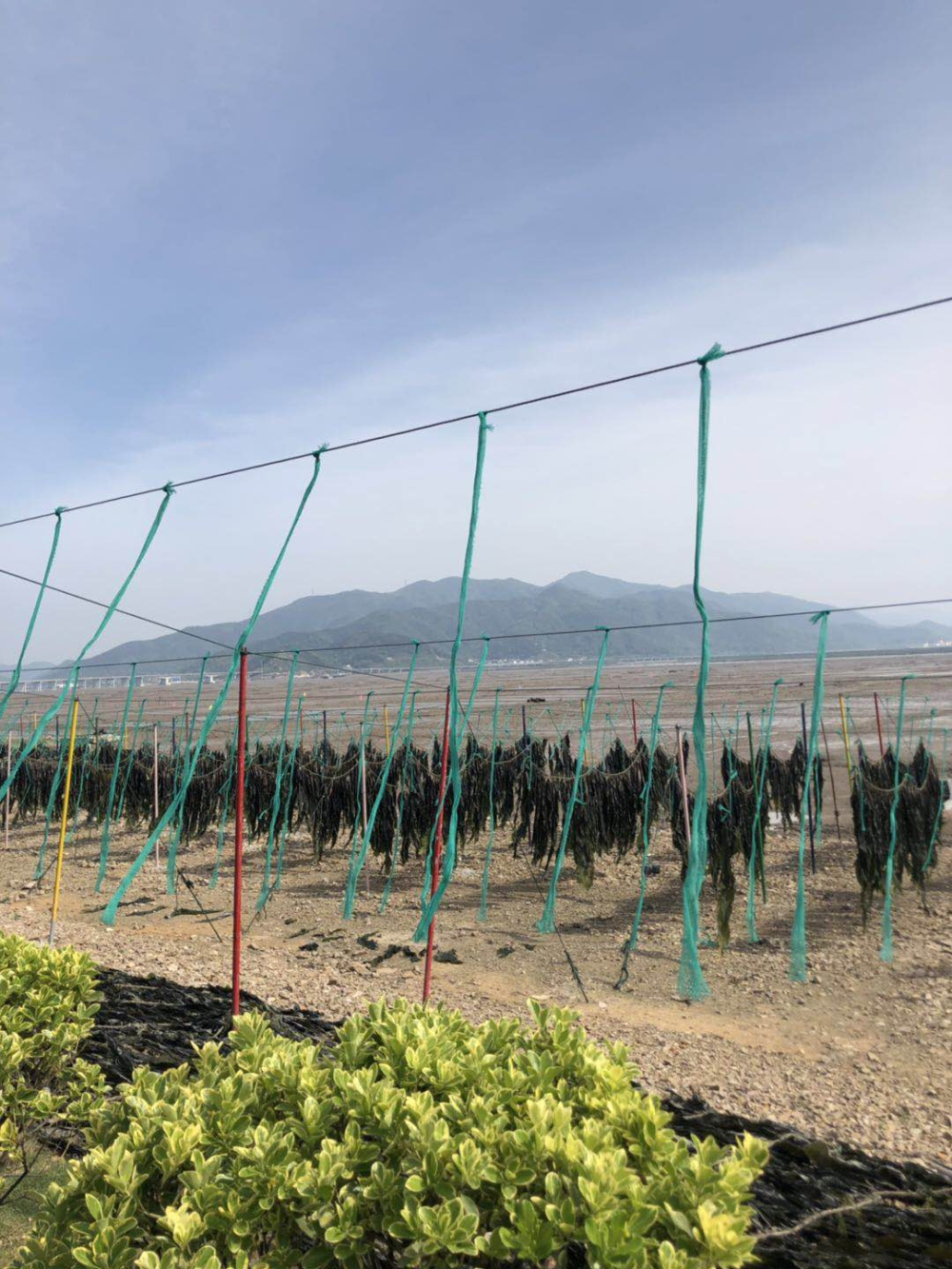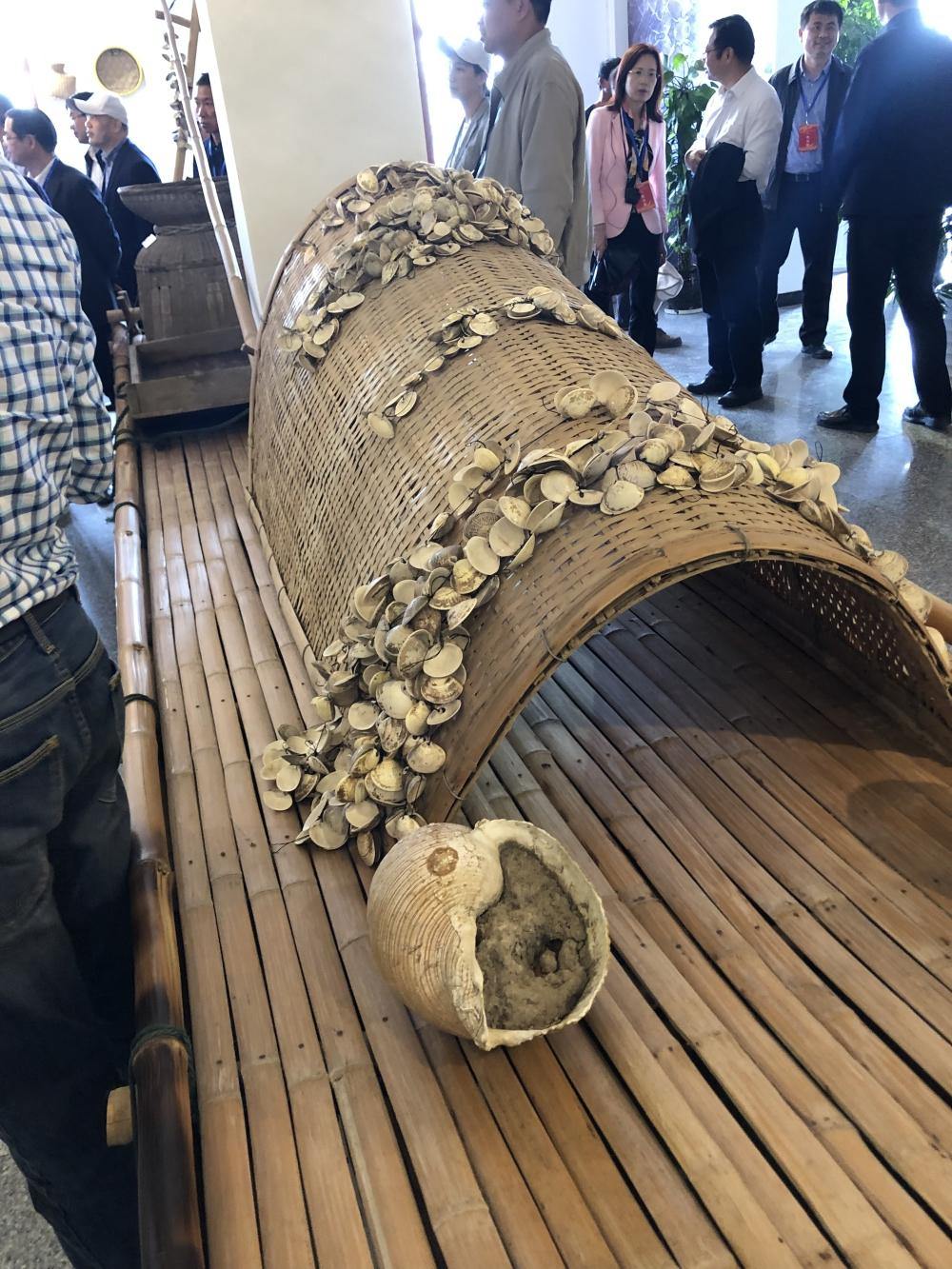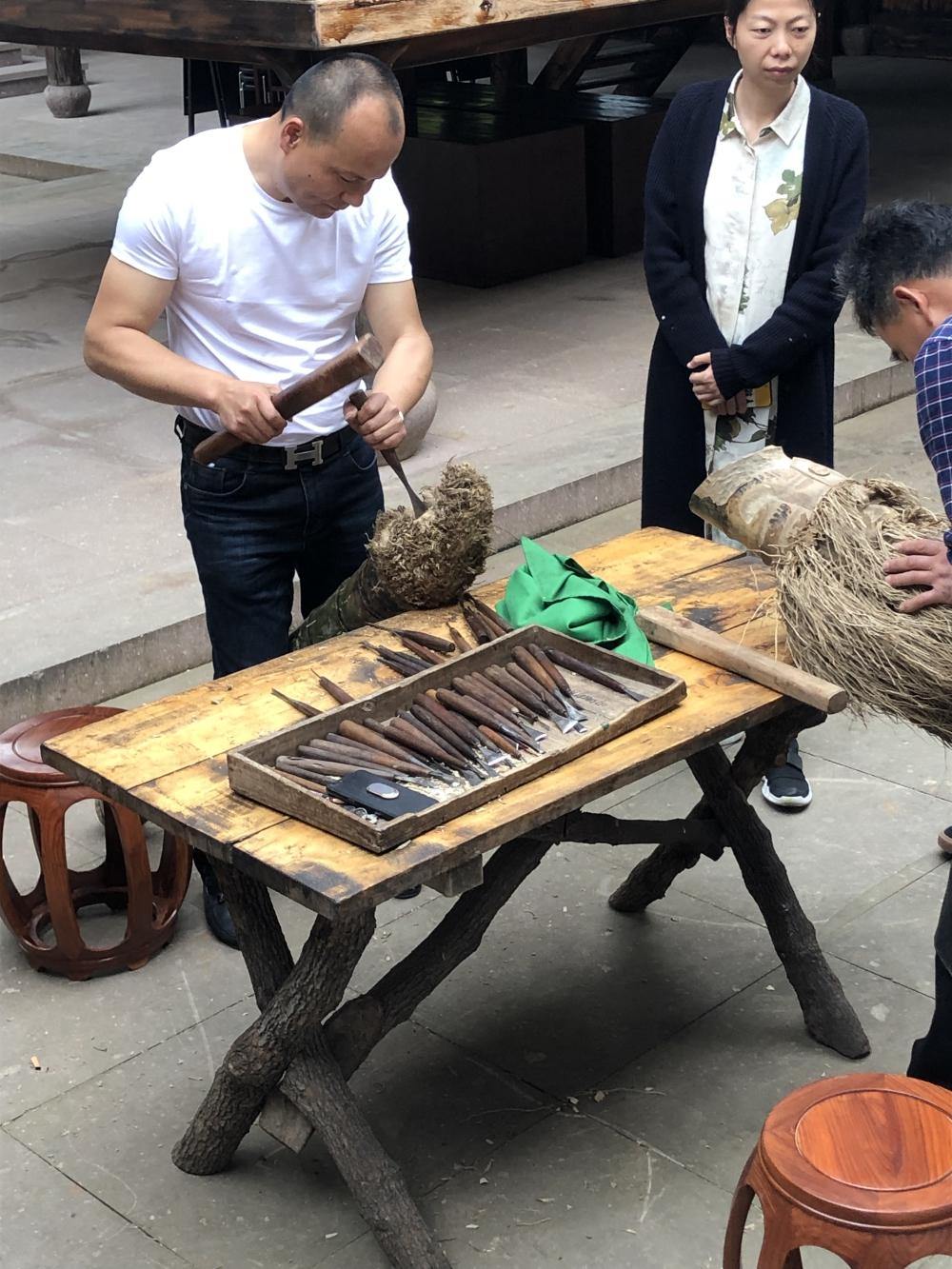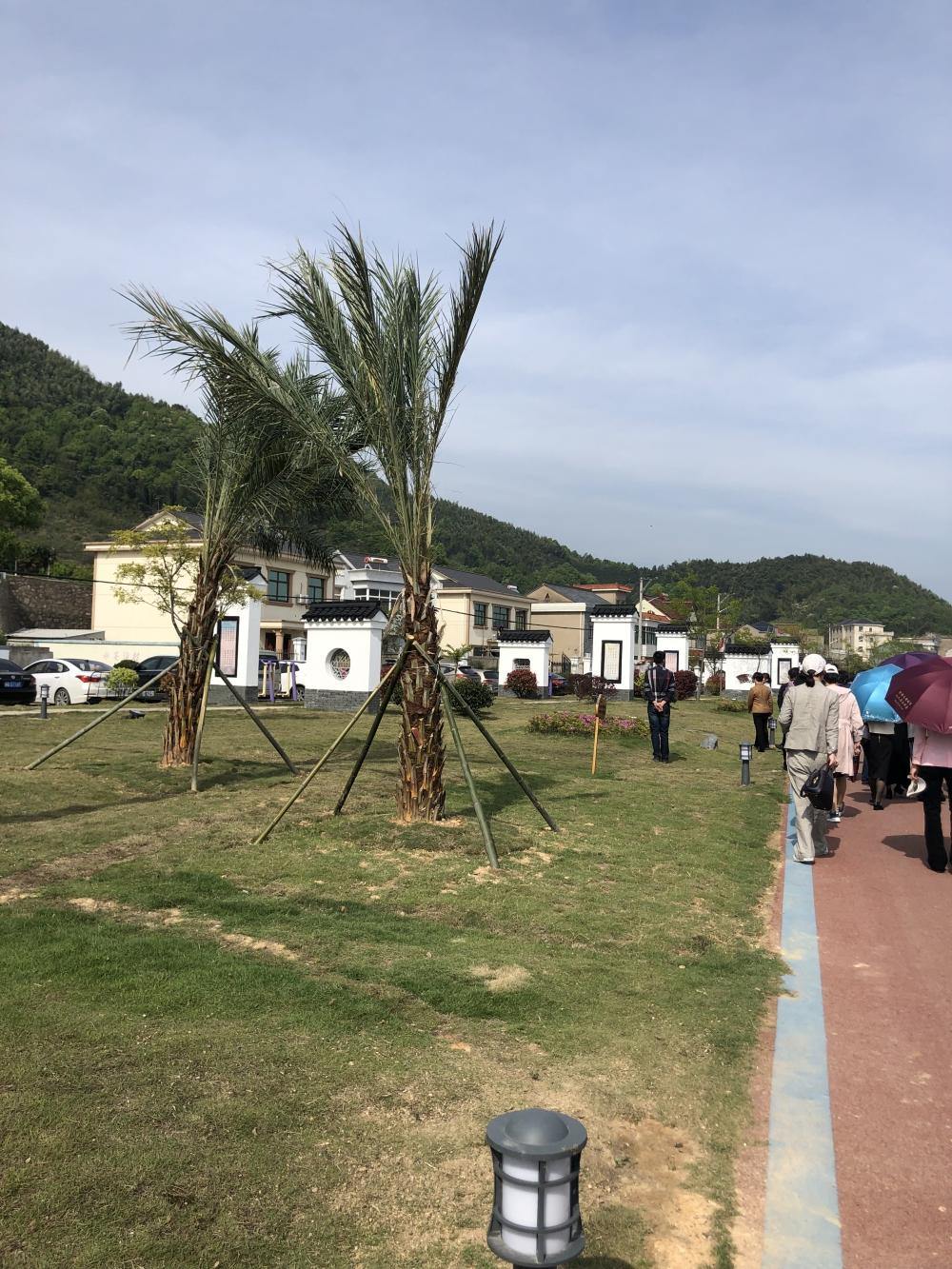农村文化建设,是一种基于对农村和农民的理解、尊重之上的引领。她融进了浓浓的乡土内容,无论节庆礼仪、教育培训还是文体娱乐活动,都有文化能人在大显身手,都有广大农民群众在积极参与,文化礼堂让人有亲近感、认同感和归属感。
在浙江,文化礼堂不一定是村里最好的房子,但一定是村里最热闹的地方。久闻浙江省的农村文化礼堂,有风景有特色受欢迎,前不久的一个机会,让我得以走访象山县黄避岙乡塔头旺村、涂茨镇旭拱岙村和墙头镇溪里方村的三个农村文化礼堂,有了一次难得的直接体验。
海岸线上的“渔俗”风情
第一站是黄避岙乡塔头旺村文化礼堂,位于宁波市“斑斓海岸”文明示范线上,具有独特的“渔俗”风情。
一走进塔头旺村,就被海边村民晾晒在滩涂上的海带吸引,墨绿色的海带一排排随风飘扬,散发着独有的香气。村子滨海是一条彩色路,“斑斓海岸”名不虚传。

塔头旺村的文化礼堂包括“一馆二堂五廊”。文化礼堂主建筑建于2016年,面积450平方米,共有两层。“一馆”就是位于一层的渔家风情馆,用于展示渔耕农具及使用方式,挖掘渔家文化,展示西沪港特色海产品。“二堂”是二层的文化礼堂和西沪讲堂。用于安排各类礼仪及文化活动,“两堂”既与群众性文化活动相结合,又与知识技能学习等相接轨。“五廊”则包括村史民情、家风家训和文化长廊等内容。

我发现,位于塔头旺村文化礼堂大门前的东首,有六组灯箱镶嵌于文化墙内,每组有20首诗歌,循环滚动。这些诗歌选自晚清诗人姚夑创作的“西沪棹歌”,可谓雅韵十足。
村民林海莹是文化礼堂的专职管理人员,她说,村里的文化礼堂这几年先后举办和承办了文体活动20余场,比如宁波市阿拉电影周宣传活动等。
当天在塔头旺村的文化大舞台上,非遗文化“走书”艺人陈亚娟正在表演。她说唱的题目是《斑斓西沪》。台下的村民,一边吃着“西沪三宝”制成的特色点心,一边开心地看着表演,其乐融融。
点心DIY,体验一把非遗技艺
第二站是涂茨镇旭拱岙村,也是一个临海村子,因旭日从东海拱起而得名。
走进该村,文化气息扑面而来,村规写在木条上,木条组成了一个扇面。墙上写着二十四节气养生诀。村里一幢年代最久的木屋经过妙笔涂绘,颇具艺术气质。

拱岙村的文化礼堂是这里的旅游景点,礼堂综合楼、二十四节气点心坊、临水游乐区、沁水舞台和三治长廊,让游客们流连忘返。
在二十四节气点心坊,刚好碰见点心师傅端出应景节气的时令点心,艾草团子、春笋咸菜团子……据悉,这些点心的制作技艺已列入象山第五批非遗目录。点心注册了“旭公点心”商标,现场还可以让游客DIY,村民说,这些点心在网上也卖得很好。

临水游乐区也是拱岙村乡村旅游的重要景点,在这里有我儿时记忆中的“跳牛皮筋”“跳房子”“打弹子”等游戏项目。
在沁水舞台上,已经排练了半个月的村民,正在表演拱岙村村歌大合唱《向前方》。
一位来自沈阳的游客对我说,没想到浙江的乡村这么美,这么有文化,居住生活的地方就是景区,这里的村民好幸福。
因为农村跑得不多,新农村有这么美,其实我也没想到呢。
古建变美术馆,古村处处古韵
离开拱岙村,最后一站是墙头镇溪里方村。溪里方村青山环抱,村东西两侧有溪,从村子蜿蜒而过,山清水秀,环境优美。
与前面两个村子相比,溪里方村的特点是,这是一个有着浓厚历史文化底蕴的村落,2017年入选首批浙江省传统村落,2019年被评为浙江省历史文化(传统)村落保护利用示范村。

溪里方村的文化礼堂充满了“古韵”,在保护的基础上,村里对恭房、仁三房等民居古建筑进行适度开发,利用古村落独特的资源,建成了村级美术馆、乡村方志馆、乡村文旅中心等。
在溪里方村美术馆,有几位老外朋友正跟着村民在学剪纸,红红的纸头铺满长木桌,与美术馆的民居古建筑相映成趣。
村后一大片油菜田前有一块“你是人间四月天”的剪影牌,远处暮色四合,浪漫景色引来不少人拿起手机拍照,留下这美丽的一幕。
Cultural Centers Flourish across Rural Zhejiang
A provincial work conference on rural cultural centers was held from April 18 and 19 in Yinzhou, a district of Ningbo in eastern Zhejiang. The representatives from all over the province gathered to have case studies of the model cultural centers in Ningbo.
Demographic data indicates that rural residents account for 38% of the population of the province. For a long time, investment into cultural undertakings lagged somewhat behind investment into economy. In order to solve this problem, Zhejiang launched a province-wide project in 2013 in a bid to set up cultural centers in all villages with a population of 500 and more. Since then, cultural centers in rural Zhejiang have become a phenomenon. At the yearend of 2018, there were 11,059 cultural centers in rural areas across the province and 52.4% of the villages with a population of 500 or more had a cultural center, as indicated in government statistics. It is expected that 3,000 more cultural centers would be added in 2019 and that by 2022 all the villages with a population of 500 and more will have had a cultural center.
Fascinated by the phenomenon, I took a brief trip not a long ago and visited three village cultural centers in Xiangshan, a coastal county under the jurisdiction of Ningbo, a harbor city in eastern Zhejiang.
The first cultural center I visited is in Tatouwang, a village in Huangbi’ao Town. Unmistakably the village’s economy has everything to do with the sea. I saw rows of kelp stacked on racks being dried in the air on the beach. The kelp fluttered like flags, emitting a strong and delightful smell. The village has a seaside road paved in colors. The two-story cultural center, built in 2016, boasts a museum, an auditorium, and a lecture hall. The museum on the ground floor displays the life of local villagers: farming tools and fishing tools and seafood products. The auditorium and the lecture hall have served as venues for many cultural events and lectures. There are five long corridors, the walls of which feature photos and texts about the history of the village, life, family mottos, etc. On the façade wall near the gate of the cultural center are six light boxes showing a total of 120 poems, all composed by Yao Xie, a poet of the Qing Dynasty. The poems are all about Xihu Port, where the village is situated.

The cultural center has hosted 20 some cultural events since its inception, including a promotional activity of a weekly film festival in Ningbo, I learned. In the evening, I watched a village artist perform a ballad singing at the cultural center.
Xugong’ao Village in Tuci Town was my second stop of the trip. It is also a seaside village. The cultural center is a large compound: the auditorium, the garden, the pastry workshop, a waterside zone, a theater stage built in a pond above water, and a long corridor. In fact, the village is a huge tourist attraction. The cultural center serves as a tourist facility there. The pastry provides tourists with pastries in the village style, using seasonal ingredients. The waterside zone is a place where children play traditional games. I watched villagers sing a village song on the theater stage. They had been rehearsing for about half a month. I chatted with a tourist who came all the way from Shenyang, a city in Northeast China. “I didn’t expect to see such a beautiful village with a colorful cultural life. The village is a scenic attraction itself. Villagers here must be very happy,” commented the tourist. Nor had I foreseen such a beautiful village before I started this journey.
My last stop was Xilifang Village in Qiangtou Town. The village is surrounded by verdant hills and flanked on either side by a stream. In comparison with the previous two villages, Xilifang goes back to very ancient times. In 2017, it was inscribed on the first provincial list of ancient villages. In 2019, it was identified as a model village of history and culture.
The village’s cultural center is full of historical charms. Based on ancient houses and compounds, the village has an art museum, a history museum, and a center for culture and tourism. During my visit to the art museum, I saw a few foreigners sitting at a long table covered with a long piece of red paper and learning paper-cutting under the guidance of a few villagers. The scene of the foreigners trying something very traditional and Chinese in the ancient architectural ambiance of the gallery was a wonder to my eyes. I came to a large farmland of the blooming canola crop beside the village at dusk. As darkness began descending, the field looked charming. Some tourists took out their cell phones and photographed the scene.
